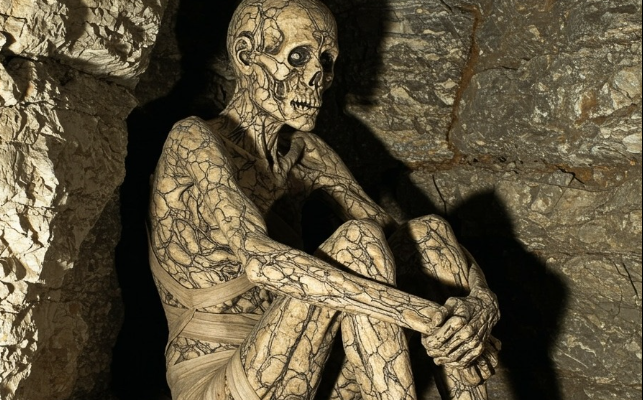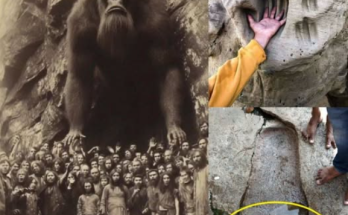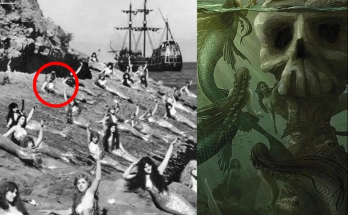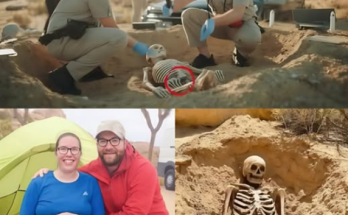A team of archaeologists working in an uncharted mountain region has announced a discovery that could reshape the way we understand ancient civilization and human evolution. Deep within a narrow limestone cave system, researchers uncovered the remarkably intact remains of what is now being called the “Veined Mummy.” Unlike any specimen previously recorded, the body displays a complex network of vein-like patterns running across its skin and limbs — formations that appear both organic and mineralized. The initial visual analysis suggests that these patterns were not carved or painted but rather developed as part of the mummy’s tissue structure, now fossilized in exquisite detail. Experts on-site described the figure’s preservation as “unnervingly lifelike,” with intact musculature, visible facial features, and an unusual posture — arms resting calmly against the torso, head slightly bowed, as though frozen in a deliberate state of repose. The discovery, made several meters below a sealed cave chamber, was accompanied by faint traces of resin and mineral deposits, indicating that the mummy’s preservation was not the result of traditional mummification methods known from Egypt, South America, or Asia.
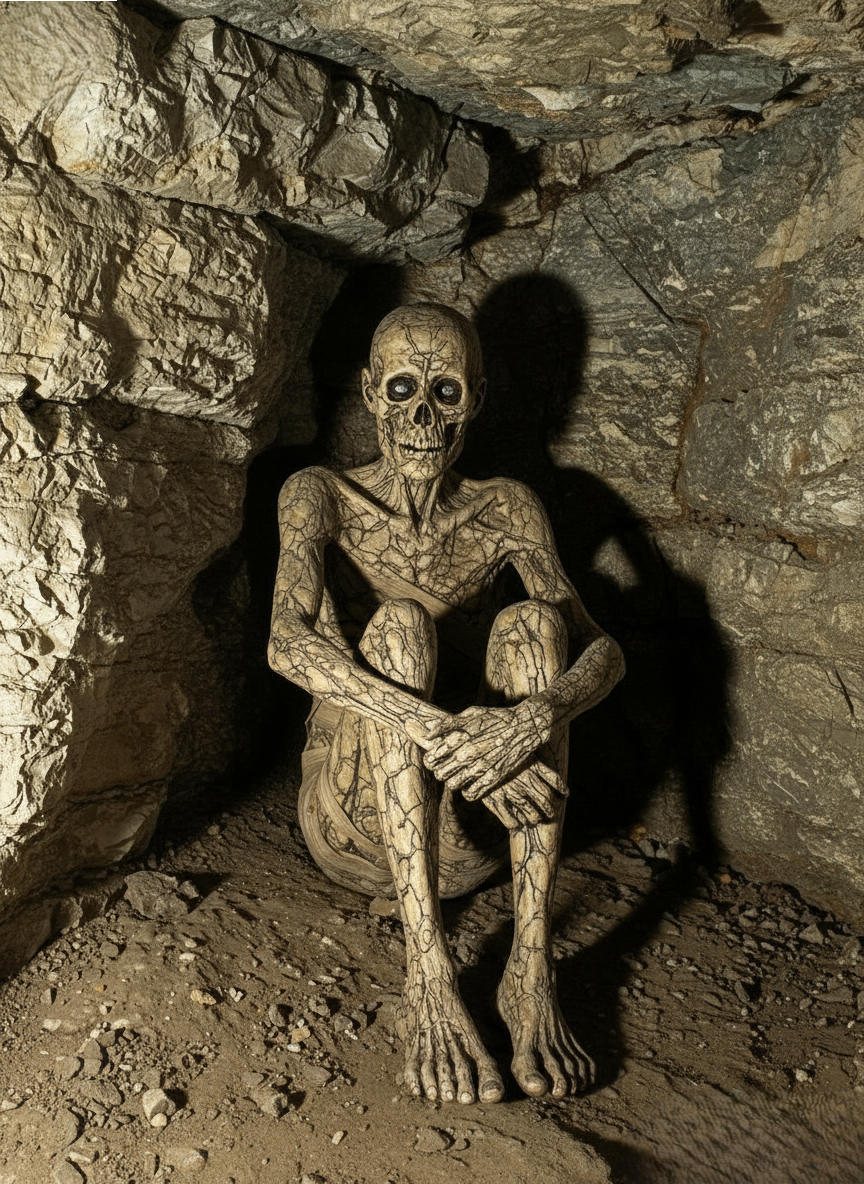
The find has sparked intense debate among the scientific community, with specialists from multiple disciplines struggling to explain its origin. Initial radiocarbon dating and mineral composition analysis are underway, but early estimates suggest an age well exceeding 5,000 years. The veined texture has drawn particular interest: under ultraviolet and infrared scanning, the patterns appear to contain residual organic compounds that suggest they may once have transported fluids — a biological impossibility according to modern anatomy. One camp of researchers believes the veins are a natural byproduct of mineral infiltration during decomposition, a geological quirk that coincidentally mimics organic form. Others propose a far more radical hypothesis — that the veins were the result of an ancient preservation technique or biochemical process unknown to modern science. This theory posits that the civilization responsible for the burial may have possessed a level of anatomical and chemical knowledge previously unrecorded in human history. The mummy’s unique preservation conditions — low oxygen, constant humidity, and a high concentration of calcite — could have amplified whatever process was originally employed, locking the body in a near-perfect state for millennia.
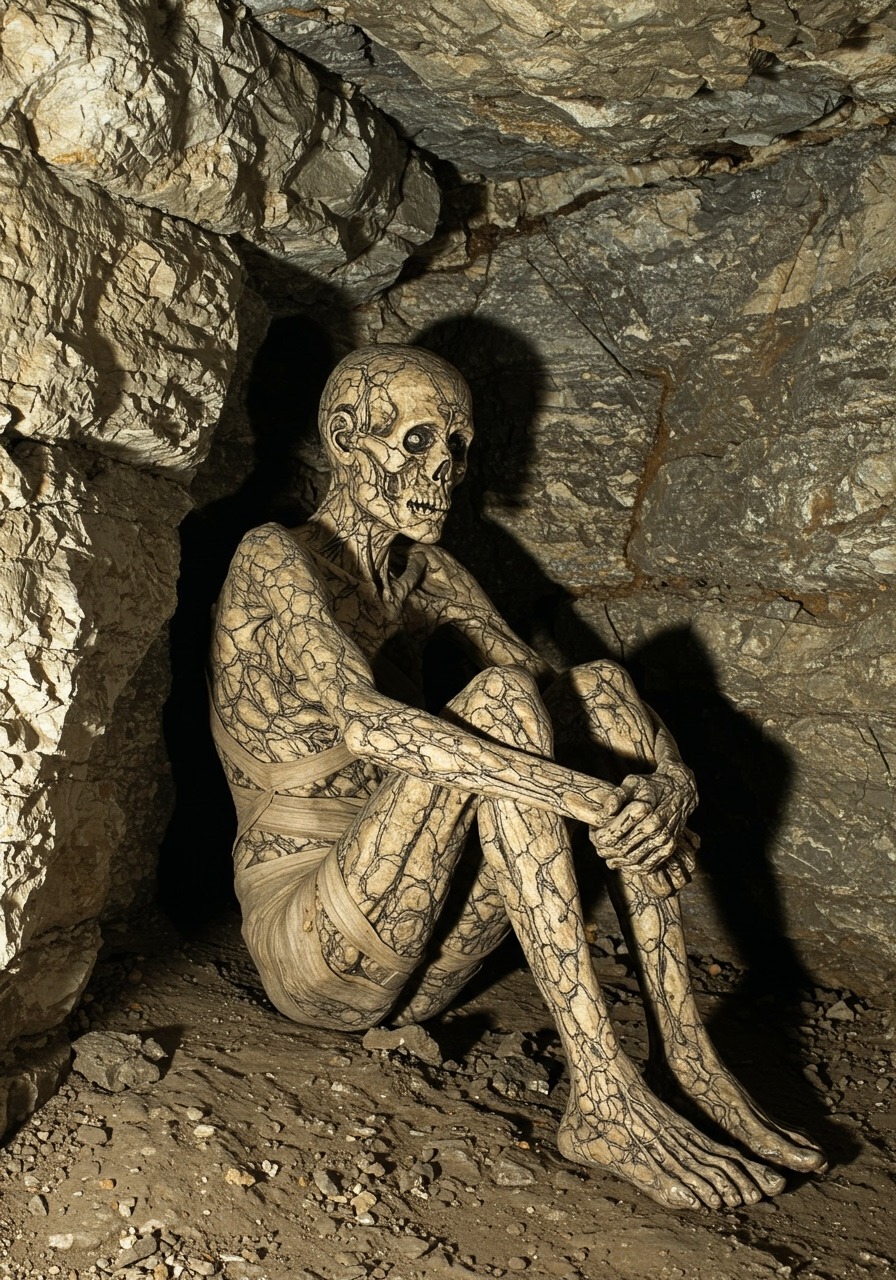
Beyond the laboratory, the “Veined Mummy” has already captured the world’s imagination. News of the discovery has ignited a storm of fascination and controversy online, with theories ranging from lost civilizations to ancient genetic experimentation. Some independent researchers have noted parallels between the mummy’s posture and depictions of deities in early mountain cultures across Asia and South America, hinting at a possible ritualistic or symbolic purpose. Others warn against sensationalism, emphasizing the need for rigorous peer-reviewed study before drawing conclusions. Nonetheless, the discovery raises profound questions about humanity’s forgotten past — about what knowledge may have existed before the dawn of recorded civilization, and how much of it might still lie hidden beneath the earth. International institutions, including UNESCO and several leading universities, have reportedly expressed interest in funding a long-term interdisciplinary investigation into the find. For now, the cave site remains sealed under government supervision, while samples undergo further testing in secure laboratories. As scientists race to decipher the mummy’s origin, one sentiment echoes across both the academic and public spheres: discoveries like this remind us how little we truly know about our species’ history, and how the line between myth and science can sometimes blur in the most unexpected of ways.
